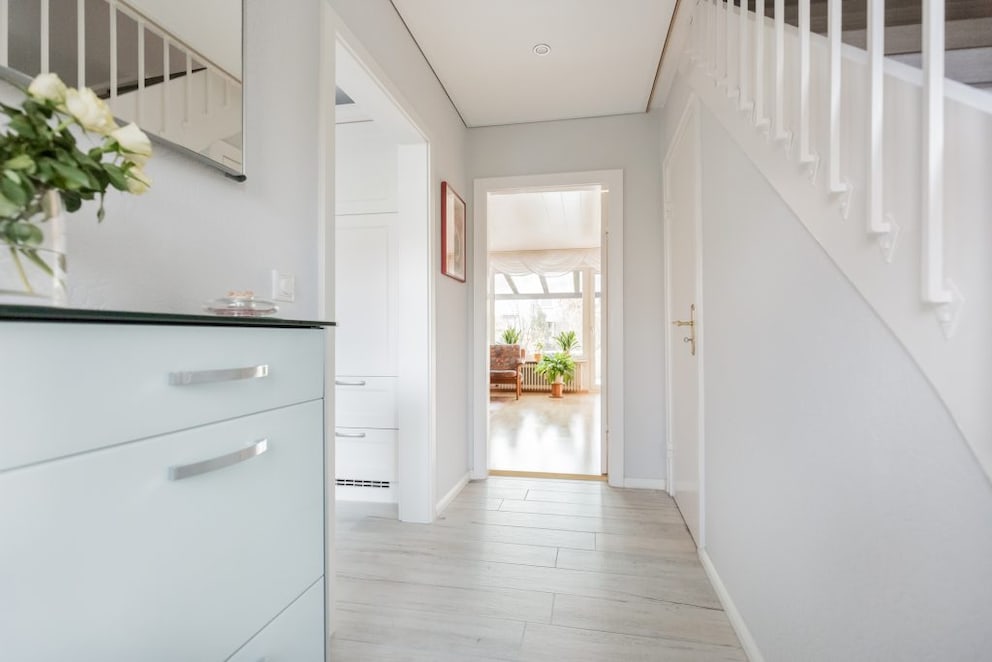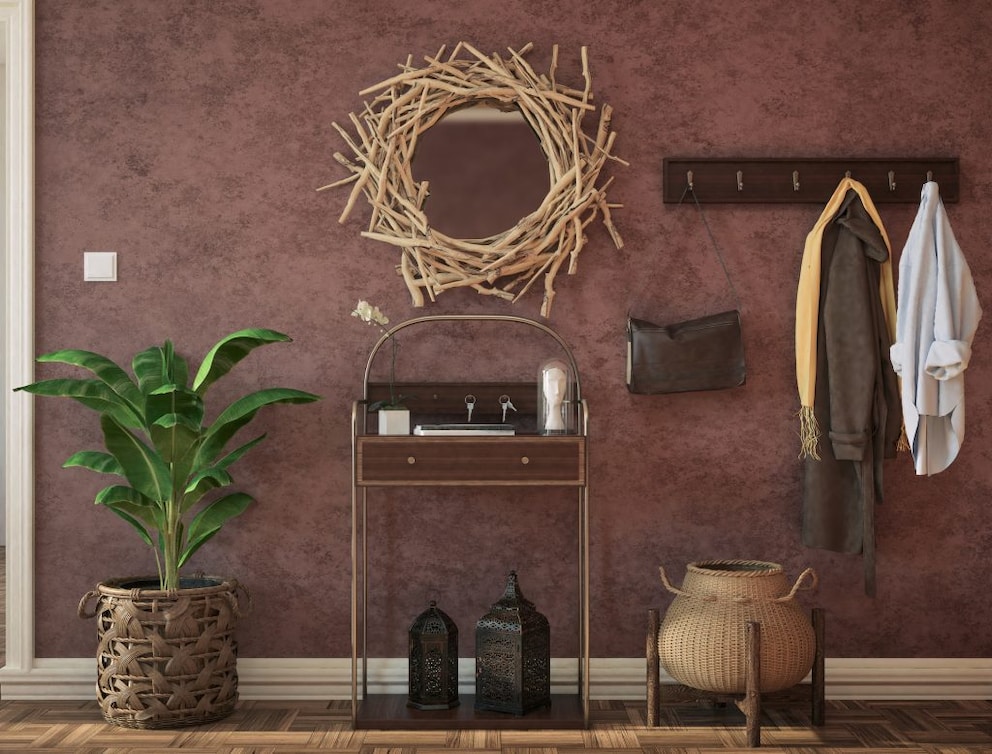April 25, 2022, 2:58 pm | Read time: 4 minutes
In most cases, the entrance area of a home is anything but straightforward. This often requires several compromises when furnishing. However, the clever use of colors can be helpful here. So, which wall colors are suitable for different types of hallways?
Hallways often prove to be particularly challenging when decorating. They are either interior spaces with no windows and natural light or are very small and cramped. How can you make such a hallway welcoming, or even cozy? One trick is choosing the right wall color. It’s helpful to know which colors suit which room layout.

7 Creative Ideas for a Unique Hallway

How to Properly Set Up Your Hallway – 13 Tips

How to Make Small Spaces Feel Larger
Finding the Right Wall Color for the Hallway
Since the entryway is prone to clutter and dirt due to numerous clothes, accessories, and shoes, it’s best not to experiment too wildly with colors. Otherwise, the first impression upon entering the room might be overwhelming. And since a hallway is essentially a passageway, the design effort should be efficient but not overly intense.
Narrow Hallway
A narrow hallway primarily needs one thing to appear more inviting: a stretching effect. To achieve this, the long side walls should be kept light, preferably white. The abundant artificial light used in a windowless room provides reflection, creating a sense of more space.

Also interesting: 5 Tips to Keep the Hallway Clean
Focusing on brightness quickly reveals a hallway’s problem area: bright spaces are very sensitive and prone to dirt. So how can you integrate wall color into a narrow hallway? It’s advisable to use accents, such as colorful accessories like a vase or a stool. Another solution is to highlight a single wall, like a soloist in an orchestra. The best choice for this is the front wall, meaning the windowless wall at the end of a narrow hallway.
Small Hallway
In a small hallway, maintaining brightness is also key. Not all walls need to be white, but they should be in the spectrum of light natural or pastel tones. This best compensates for the lack of natural light. For a friendly atmosphere, wall colors like sand, light gray, mint, or a soft lemon yellow are suitable. Natural colors feel cozy and inviting, while pastels exude a cheerful to poppy vibe.
If pastel colors seem too cool and artificial, you can alternatively opt for warm, powdery tones like coral or marsala. However, the rule for small hallways is: the darker the color, the less it should be used. The lighter a color is, the more walls can be painted with it.

Large Hallway
Large hallways offer the opportunity to be bolder with color. Here, dark wall colors and contrasts can be used generously. Both aspects are best highlighted when the door leaf and frame, baseboards, and ceiling–possibly with stucco elements–remain entirely white. This creates an elegant and charismatic entrance to your home with an almost dramatic effect.

Other, more extreme color duos like a black-and-white contrast or multiple bright colors have enough space here without feeling uncomfortable. Dark colors may seem gloomy and confining in small or narrow hallways, but in large ones, they can fully realize their potential. With the help of indirect lighting, a cozy atmosphere is quickly achieved.
Cramped Hallway
Rooms with a complicated layout, like a cramped hallway, often present a particular challenge in terms of furnishing. If you don’t want the walls to remain colorless, there are various solutions. One is to focus on the most central wall in the hallway. This doesn’t have to be the largest wall area in the room, just the one that noticeably stands out. If all other walls remain neutral, this one wall stands out beautifully.
Alternatively, for a bold color statement in the hallway, you can imitate wainscoting. Here, all the walls in the room are painted only halfway up. This gives the cramped hallway a nostalgic and elegant charm.

